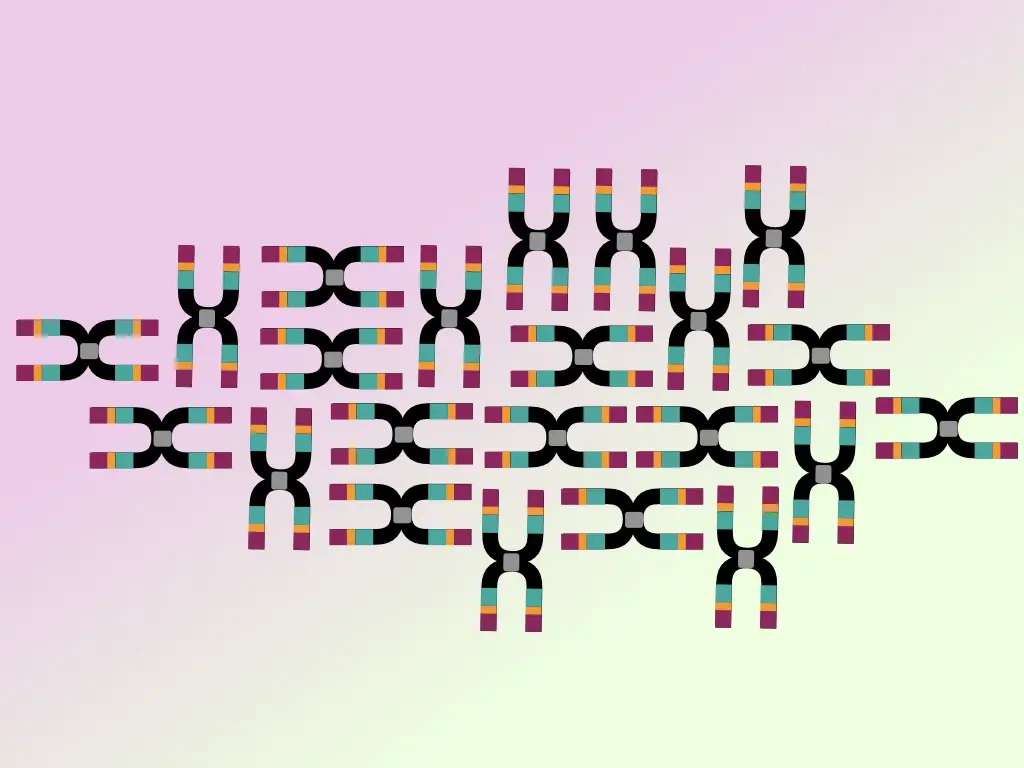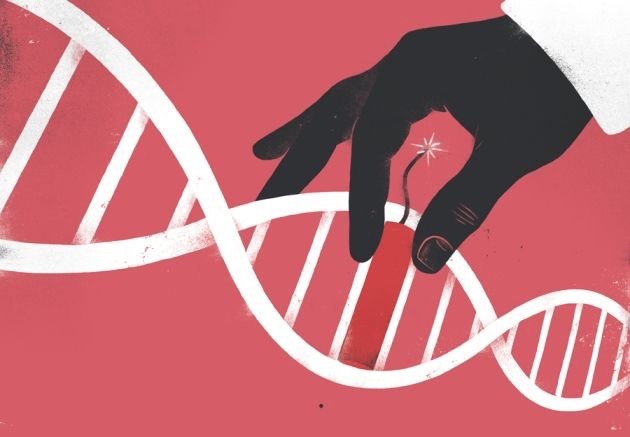“The prokaryotic chromosome is circular or linear in shape, possesses a few genes and less repetitive DNA. Learn about the structure, genome organization and function of the prokaryotic chromosome in this article.”
‘Life on earth–’ is a debatable topic, however, it’s broadly categorized into two— prokaryotes and eukaryotes. The prokaryotes are simple and single cell organisms while the eukaryotes are complex and multicellular organisms.
For instance– Bacteria and Archaea are grouped into prokaryotes while animals, plants and others are grouped into eukaryotes. Nucleic acid is an important characteristic of all life forms on earth— either DNA or RNA.
Excluding retroviruses, all other organisms either prokaryotes or eukaryotes contain DNA as their genetic material. Other than that, some particular characteristics of prokaryotes are a simple organization, unicellularity, and lack of nucleus & membrane-bounded organelles.
Now, immediately something can strike in your mind. If prokaryotes lack a nucleus, then where the DNA is present, do they contain the structure ‘chromosome?’ and if so, how do they inherit their genetic material?
Let’s find out.
In this article, we will understand the prokaryotic chromosome, its structure, organization, function and other related information. Keep in mind we will consider E. coli as a study organism for this article.
Stay tuned.
Disclaimer: Information provided here is collected from peer-reviewed resources and re-presented in an understandable language. All the sources are enlisted at the end of the article.
Key Topics:
What is a Prokaryotic Chromosome?
First, let me answer your question, Yes, prokaryotes do contain a chromosome, but not like the eukaryotic chromosome. The prokaryotic chromosome is either circular (mostly) or linear, and present in the cell cytoplasm as it lacks a true nucleus.
Despite of that, it replicates, transcribes, translates and inherits genetic material much like the eukaryotes using some different mechanisms. In 1956, Mason and Powelson showed that E. coli carries a single circular chromosome on which the majority of vital genes are present.
Note that there are significant differences between prokaryotic and eukaryotic DNA. Click the link to read the article.
Properties:
Here are a few important properties of prokaryotic DNA.
- Circular or linear in shape.
- Contains extrachromosomal DNA as plasmids.
- Haploid genome.
- Only single gene copies are present.
- Gene expression is regulated by various operons.
- Possesses very low junk DNA, approximately 12%.
- Transcription, translation and replication occur in the cytoplasm.
- Smaller genome size.
- High mutation rate.
Do you know?
“Prokaryotes” literally means “before nucleus.”
A prokaryotic chromosome is circular or linear in shape. Unlike the eukaryotic chromosome, the circular prokaryotic chromosome is end-to-end joined, known as closed circular DNA or relaxed circular DNA. It’s like a “closed loop” which indeed helps in efficient replication.
Related article: What is rcDNA? rcDNA vs cccDNA.
| Prokaryotic organism | Chromosome structure |
| E. Coli | Circular |
| B. Burgdorferi | Linear |
| V. Cholerae | Circular |
The prokaryotic chromosome is present in the cell cytoplasm and in the structure, known as ‘nucleoid*.’ It’s not a true nucleus. Unlike the eukaryotic chromosome, it doesn’t contain histone proteins. In addition, prokaryotes also contain smaller, double-stranded and circular plasmid DNA.
(*Nucleoid- lacks a nuclear membrane and thus, it isn’t a true nucleus.)
Plasmids also contain some important genes as well and play a vital role in bacterial survival. For instance— genes for antibiotic resistance.
Generally, the size of the prokaryotic genome is between 50 kb to 13 Mb, which is still very large to settle in a tiny cell. So even though it doesn’t contain histones, it still follows the packaging process and fits in the cell.
| Prokaryotic organism | Size |
| E. Coli | 4.5 to 4.7Mb |
| B. Burgdorferi | 950Kb each chromosome |
| V. Cholerae | 3.2Mb |
It’s pivotal to know that the central dogma process in prokaryotes is more efficient than the eukaryotes as the chromosome is present in the cytoplasm. Replication, transcription and translation occur in the cytoplasm only.
Interestingly, the prokaryotic chromosome is polyploid, meaning, it may contain many chromosomes in a single cell. It may contain as many as 100 copies of chromosomes.
| Prokaryotic organism | Copies of chromosomes per cell |
| E. Coli | 1 |
| B. Burgdorferi | 11 |
| V. Cholerae | 2 |
Structure, Organization and Packaging:
The diameter of the E. coli cell is approximately 1 to 2 µM while the size of the covalently closed circular (relaxed) E.coli genome is 1100 µM. Imagine the level of supercoiling required to fit the DNA in E. coli cell.
Loops and supercoiling help to pack such a huge DNA in a prokaryotic cell. Typically 40 to 500 loops are formed on a single chromosome. RNA works here as a connector for loops.
Now, each loop is independently supercoiled and forms the most compact chromosomal structure. Here, not only proteins, but RNA also helps in packaging. The circular relaxed DNA arranges into loops and becomes 30µ and further supercoiling of each loop prepares 2µ sized compact chromosomal structure.
Prokaryotic DNA packaging highly relies on the activity of topoisomerases and other important proteins, for example— HU, HNS and IHF. Majorly, prokaryotes follow negative supercoiling in which the DNA twists opposite to the double helix.
histone-like proteins (HU), Histone-like nucleoid structuring proteins and other NAP (nucleoid-associated proteins) with the help of topoisomerase pack the prokaryotic chromosome.
Integration host factor– IHF is another DNA-binding protein that participates in the present process. The genome follows a DNA supercoiling mechanism to become compact, as we discussed.
DNA topoisomerase I relaxes the supercoiling by DNA unwinding and allows efficient replication, transcription and translation, while DNA topoisomerase II introduces negative supercoiling by DNA winding and coiling.
Related article: Function of Topoisomerase I and Topoisomerase II.
Prokaryotic DNA is tightly packed, compact, and very tiny and thus, the rate of replication is very slow. The large portion of the present chromosome is a transcriptionally active— gene-rich region. Prokaryotic chromosomes contain less heterochromatin or junk DNA.
However, it follows the operon model in which multiple genes use a single mechanism and translate into proteins. To learn more, read this article: trp and lac operon in Bacteria.
The most compact and highly supercoiled prokaryotic chromosomal structure is transcriptionally less active. However, the looped state is functional. Studies also suggest that negative supercoiling helps in many biological functions and so, most bacterial chromosomes are negatively supercoiled.
Function of Prokaryotic Chromosome:
Despite having a smaller size, a few genes, circular and compact structure, the prokaryotic chromosome performs all the vital functions much like the eukaryotic chromosome.
- It protects and stores its crucial genetic information on the circular chromosome. However, through horizontal gene transfer, it inherits it as well.
- It copies its genetic material through replication. As aforementioned, the replication process is slow here, and it uses two replication forks to replicate efficiently.
- It transcribes into coding proteins and also regulates gene expression using an operon model.
- It has a very high mutation rate which helps it to adapt to the environment. It also helps produce genetic diversity.
- Plasmids carry genes like antibiotic resistance which help them to survive under adverse conditions.
Related article: Prokaryotic DNA Replication.
Wrapping up:
The prokaryotic chromosome is mostly circular and has a simple organization. However, it follows complex processes to pack the DNA. The beauty here is, that even though the genome is so small and contains a few genes, operon-like mechanisms help in gene expression and regulation.
If you want to learn about DNA packaging in eukaryotes you can read our previous article. I hope this article will help you in your genetic learning.
Sources:
- Touchon M, Rocha EP. Coevolution of the Organization and Structure of Prokaryotic Genomes. Cold Spring Harb Perspect Biol. 2016 Jan 4;8(1):a018168. doi: 10.1101/cshperspect.a018168. PMID: 26729648; PMCID: PMC4691797.
- Kuzminov A. The precarious prokaryotic chromosome. J Bacteriol. 2014 May;196(10):1793-806. doi: 10.1128/JB.00022-14. Epub 2014 Mar 14. PMID: 24633873; PMCID: PMC4011006.
- Principle of genetics. Chapter 5- prokaryotic nucleoid structure (125-127).

